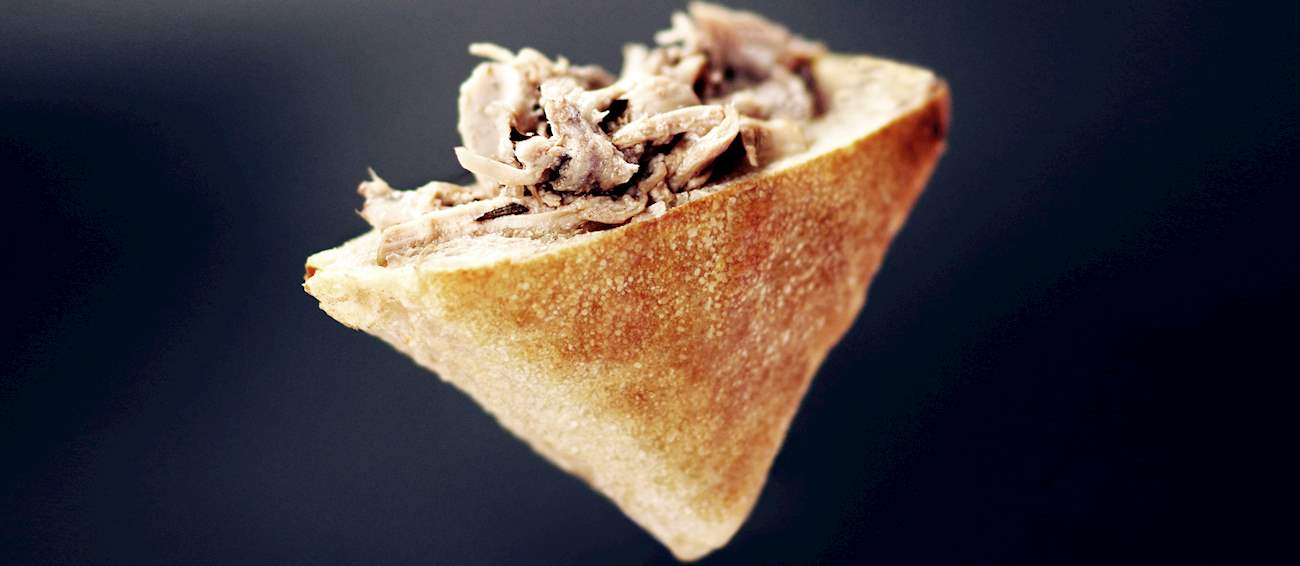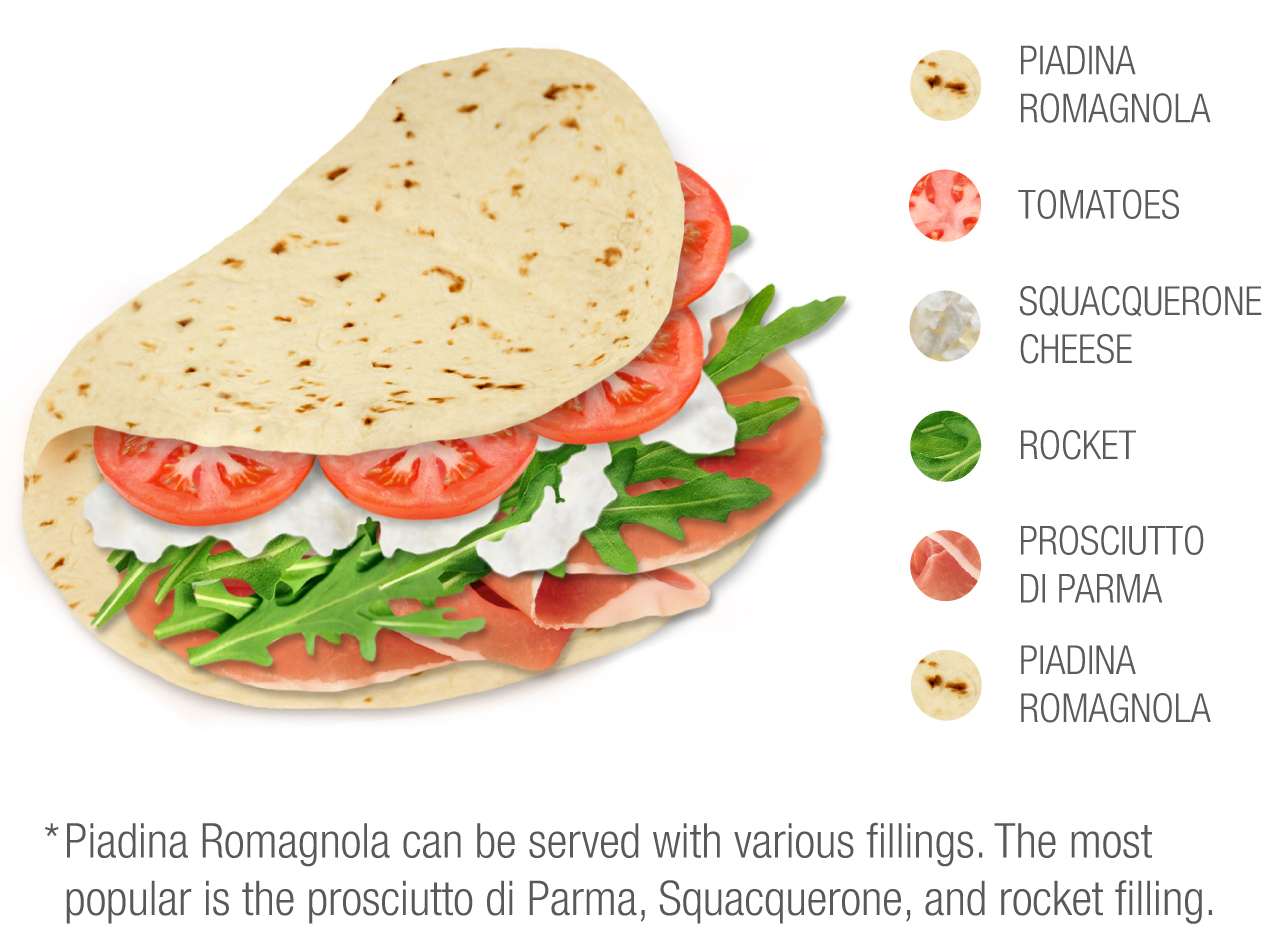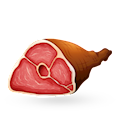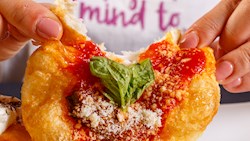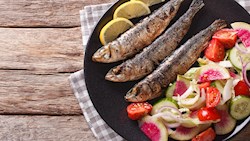MAIN INGREDIENTS
Even though today this griddled Italian flatbread is typically enjoyed as a sandwich (one of the most popular fillings includes prosciutto, creamy soft cheeses like squacquerone, tomatoes, and a handful of peppery wild arugula), Piada or piadina Romagnola was once merely a staple of the poor, often made with maize flour and called la pjida ad furmantoun in Romagnolan dialect.
In his poem entitled La Piada, which is sort of an ode to the beloved Romagnolan piadina, a 19th century Italian poet Giovanni Pascoli calls it "the bread of poverty, humanity, and freedom", describing it as "smooth as a leaf and as big as the moon." Since then, the humble, rustic piadina has come a long way and even today takes a special place in the regional cuisine, having been awarded the Protected Geographical Indication status. Le piadine, in plural, can take virtually any ingredients as their filling, and they can be easily found freshly prepared at numerous street kiosks called piadinerie, as it is best to eat a piadina only minutes after it comes off the cast-iron griddle while it's still pliable and warm - the perfect frame for the almost-melting soft cheese and delectable, thinly sliced charcuterie.
MOST ICONIC Piadina Romagnola
View moreInvented by Stefano Callegari in 2008 in Rome, trapizzino is a popular street food item consisting of a pocket of pizza bianca that is typically filled with a meat or vegetable filling – usually classic Roman dishes that would traditionally be impossible to consume on the go.
The tasty trapizzino originated from pizza by-the-slice, and its name is a play on words combining tramezzino (Italian triangular sandwiches) and pizza. This snack should be soft on the inside and crunchy outside, and due to its popularity, it even gained international acclaim and started to appear on the streets of New York as well.
Porchetta is a traditional, moist, boneless pork roast prepared all over Italy. This rustic dish is made by carefully deboning a piglet or a fully grown pig, flavoring it generously with salt, garlic, rosemary, fennel seeds or some other aromatic herbs and filling it with the stuffing, which changes depending on the region - it can be the liver, fat or pieces of skin and meat, also flavored with salt and spices.
The meat is then rolled up, spitted and slowly roasted over a wood fire. When finished, it is sliced very thinly and served warm or cold with some bread. Although popular in the whole country, with many regions offering their spin on the recipe, porchetta originated in central Italy, with Ariccia, in the Province of Rome, being the town most closely associated with it.
VARIATIONS OF Porchetta
MOST ICONIC Porchetta
View moreMAIN INGREDIENTS
Also known as arrustelle or rustelle in local dialect, arrosticini are skewers made with castrato, the meat of castrated sheep, mutton, or sometimes even lamb, traditionally grilled on an elongated, charcoal-fired brazier called fornacella.
One of the most popular meat dishes of modern Italian cuisine, these skewers were once a staple of shepherds who lived in the mountainous areas of Abruzzo, prepared merely with leftover sheep meat of lesser quality. Today, arrosticini are made with well-marbled, more tender cuts mixed with hefty chunks of ovine fat, which makes them particularly succulent.
MOST ICONIC Arrosticini
View morePizza al taglio is a variety of Italian pizza that is baked in rectangular trays and sold sliced into squares or rectangles. Prices can be marked either per slice of pizza or per kilogram. The first pizza al taglio was baked in Rome in the late 1950s, when it was topped with olive oil and tomato sauce.
Today, the dish is one of the most loved street food items both in Rome and in most of Italy. When making pizza al taglio, it is important to let the dough rise and ferment for a longer period of time. The dough is usually baked, topped, and then baked once more, resulting in an evenly-cooked pizza that's light, airy, and easily digestable.
MOST ICONIC Pizza al taglio
View moreThese crescent-shaped turnovers are traditionally prepared for the Carnival season, and even though it is believed that they originated in the Apulia region, panzerotti are extremely popular all across southern Italy. They resemble small calzone pizzas—both in shape and the dough used for its preparation—but instead of being oven-baked, panzerotti are deep-fried, which is why they're also called calzoni fritti (fried calzones), pizze fritte (fried pizzas), or simply frittelle (fritters).
The classic panzerotto filling consists of merely tomatoes and mozzarella, but they can be filled with pretty much anything and in various combinations: prosciutto-mozzarella, pepperoni-provolone, spinach-ricotta, zucchini-mozzarella, onion-olives-tomatoes, speck-fontina, etc.
MOST ICONIC Panzerotti
View moreThis traditional Italian savory treat is prepared with various fillings that are enclosed between two layers of puff pastry. Typically round in shape, rustico is usually filled with a combination of béchamel sauce, tomatoes, and mozzarella cheese, but there are also varieties that employ spinach or ricotta.
Unlike other local delicacies from Salento and Lecce, rustico is not part of the traditional country-style cuisine and is believed to have developed in the 1700s, following the invention of béchamel sauce. The pastry is a common street food item, and it is mainly enjoyed as a breakfast or an afternoon snack.
MOST ICONIC Rustico
View moreMAIN INGREDIENTS
Porchetta is a traditional moist boneless pork roast prepared all over Italy. It originated in Lazio but many regions offer their spin on the recipe. Regardless of the region, the basic method is always the same: the pig is gutted, carefully trimmed, and washed.
The belly is then filled with the chosen stuffing, generously salted, rolled up and roasted until the crackling is golden, hard, and crunchy. The Umbrian version is stuffed with the pig’s chopped entrails mixed with lard, garlic, salt, pepper, and wild fennel.
Widely considered to be one of Rome's best street foods, these breaded, deep-fried rice croquettes are in fact quite similar to the Sicilian arancini, but unlike which, Roman supplì are traditionally filled with mozzarella, and the rice is pre-simmered in a tomato-based meat sauce.
In Rome, they are popularly known as supplì al telefono, taking their name from an Italianization of the French word for surprise and the long strings of molten cheese that resemble a telephone cord — the surprise that is revealed when you break one of these crispy rice balls open.
MOST ICONIC Supplì
View moreMAIN INGREDIENTS
Arancini are big, golden rice balls filled with a savory combination of ingredients in the center. These balls are especially popular in Sicily. The fillings often include meat sauce with peas, dried prosciutto, cheeses such as mozzarella and pecorino, tomatoes, or dried capers.
The balls are rolled in breadcrumbs and fried in hot oil, developing the characteristical golden color of the exterior. A popular theory says that the dish was invented in the 10th century during the Kalbid rule of Sicily. The name of the dish is derived from the Italian word for orange, arancia, referring to the similarities in visual appearance and color, so arancini means small oranges.
VARIATIONS OF Arancini
MOST ICONIC Arancini
View moreTasteAtlas food rankings are based on the ratings of the TasteAtlas audience, with a series of mechanisms that recognize real users and that ignore bot, nationalist or local patriotic ratings, and give additional value to the ratings of users that the system recognizes as knowledgeable. For the “Top 41 Italian Street Foods” list until March 21, 2025, 2,769 ratings were recorded, of which 2,129 were recognized by the system as legitimate. TasteAtlas Rankings should not be seen as the final global conclusion about food. Their purpose is to promote excellent local foods, instill pride in traditional dishes, and arouse curiosity about dishes you haven’t tried.
